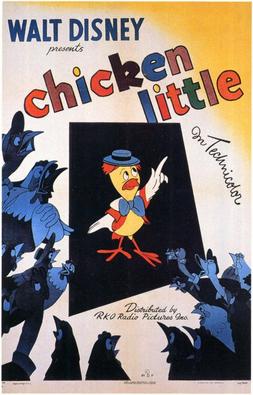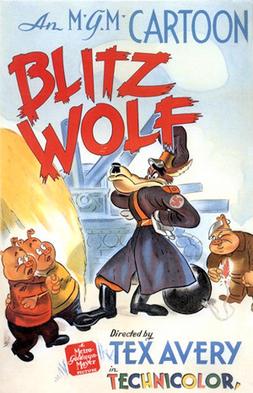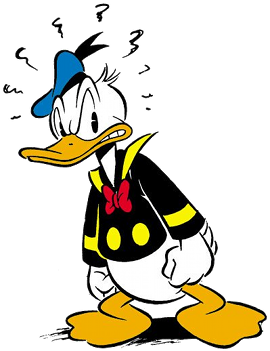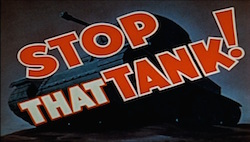
Walter Elias Disney was an American animator, film producer, and entrepreneur. A pioneer of the American animation industry, he introduced several developments in the production of cartoons. As a film producer, he holds the record for most Academy Awards earned and nominations by an individual. He was presented with two Golden Globe Special Achievement Awards and an Emmy Award, among other honors. Several of his films are included in the National Film Registry by the Library of Congress and have also been named as some of the greatest films ever by the American Film Institute.

Oswald the Lucky Rabbit is an animated cartoon character created in 1927 by Walt Disney and Ub Iwerks for Universal Pictures. He starred in several animated short films released to theaters from 1927 to 1938. Twenty-seven animated Oswald shorts were produced at the Walt Disney Studio. After Universal took control of Oswald's character in 1928, Disney created a new character similar in appearance to Oswald as a replacement: Mickey Mouse, who went on to become one of the most famous cartoon characters in the world.

Plane Crazy is a 1928 American animated short film directed by Walt Disney and Ub Iwerks. The cartoon, released by the Walt Disney Studios, was the first appearance of Mickey Mouse and his girlfriend Minnie Mouse, and was originally a silent film. It was given a test screening to a theater audience on May 15, 1928, and an executive from Metro-Goldwyn-Mayer saw the film, but failed to pick up a distributor. Later that year, Disney released Mickey's first sound cartoon, Steamboat Willie, which was an enormous success; Plane Crazy was officially released as a sound cartoon on March 17, 1929. It was the fourth Mickey film to be given a wide release after Steamboat Willie, The Gallopin' Gaucho and The Barn Dance (1929).

Der Fuehrer's Face is an American animated anti-Nazi propaganda short film produced by Walt Disney Productions, created in 1942 and released on January 1, 1943 by RKO Radio Pictures. The cartoon, which features Donald Duck in a nightmare setting working at a factory in Nazi Germany, was made in an effort to sell war bonds and is an example of American propaganda during World War II. The film was directed by Jack Kinney and written by Joe Grant and Dick Huemer. Spike Jones released a version of Oliver Wallace's theme for the short before the film was released.
Hans Fischerkoesen, also known as Hans Fischerkösen or Hans Fischer was a German commercial animator. Fischerkoesen is considered an animation pioneer, due to the inventions and innovations he applied to animation technology, especially the use of three-dimensional elements in his animations. Later he becomes Germany's most influential cartoonist, often nicknamed “Germany’s Walt Disney” alongside Rolf Kauka. He won both first and second prizes at a Dutch-sponsored international competition in 1937, for advertising films. By 1956 he had won major prizes at commercial film festivals in Rome, Milan, Venice, Monte Carlo and Cannes. Most notable was the participation in the 1st Berlin International Film Festival, where Fischerkoesen's film Blick ins Paradies won the Bronze Medal award.

Franklin Rosborough Thomas was an American animator and pianist. He was one of Walt Disney's leading team of animators known as the Nine Old Men.

Gregor Athalwin Ziemer was an American educator, writer, and correspondent. He graduated from the University of Illinois at Urbana-Champaign in 1922 with an English degree. Ziemer lived in Germany from 1928 to 1939, during which time he served as the headmaster of the American School in Berlin. After fleeing Germany, Ziemer returned to his wife Edna's hometown of Lake City, Minnesota. Ziemer wrote a couple of notable books about Nazi society: Education for Death, which inspired the eponymous Disney short, and, more directly, Edward Dmytryk's movie Hitler's Children, as well as, along with his daughter Patricia, Two Thousand and Ten Days of Hitler.

Chicken Little is a 1943 short film created by Walt Disney during World War II and directed by Clyde Geronimi. The short was based on the European folk tale "Henny Penny", known in the United States as "Chicken Little". It is an anti-Nazi film showing the evils of mass hysteria.

Three Little Pigs is a 1933 animated short film released by United Artists, produced by Walt Disney and directed by Burt Gillett. Based on the fable of the same name, the Silly Symphony won the 1934 Academy Award for Best Animated Short Film. The short cost $22,000 and grossed $250,000.

Blitz Wolf is a 1942 American animated propaganda short film produced and distributed by Metro-Goldwyn-Mayer. A parody of the Three Little Pigs told via a World War II perspective, the short was directed by Tex Avery and produced by Fred Quimby. It was nominated for the Academy Award for Best Short Subject: Cartoons but lost to Der Fuehrer's Face, another anti-Nazi World War II parody featuring Donald Duck.

Hitler's Children is a 1943 American black-and-white war film made by RKO Radio Pictures. The film stars Tim Holt, Bonita Granville and Kent Smith and was directed by Edward Dmytryk from an adaptation by Emmet Lavery of Gregor Ziemer's book Education for Death.
Between 1941 and 1945, during World War II, Walt Disney was involved in the production of propaganda films for the U.S. government. The widespread familiarity of Disney's productions benefited the U.S. government in producing pro-American war propaganda in an effort to increase support for the war.

Donald Duck is a cartoon character created by The Walt Disney Company. Donald is an anthropomorphic white duck with a yellow-orange bill, legs, and feet. He typically wears a sailor shirt and cap with a bow tie. Donald is known for his semi-intelligible speech and his mischievous, temperamental, and pompous personality. Along with his friend Mickey Mouse, Donald was included in TV Guide's list of the 50 greatest cartoon characters of all time in 2002, and has earned a star on the Hollywood Walk of Fame. He has appeared in more films than any other Disney character.

Oh Teacher is an animated cartoon directed by Walt Disney, starring Oswald the Lucky Rabbit, and distributed by Universal Pictures. The film was reissued in 1932 by Walter Lantz Productions with added music and sound effects and is the only known version to survive. The original version entered the public domain on January 1, 2023.
World War II changed the possibilities for animation. Prior to the war, animation was mostly seen as a form of family entertainment. The attack on Pearl Harbor was a turning point in its utility. On December 8, 1941, the United States Army began working with Walt Disney at his studio, stationing Military personnel there for the duration of the war. The Army and Disney set about making various types of films for several different audiences. Most films meant for the public included some type of propaganda, while films for the troops included training and education about a given topic.
Reason and Emotion is a propaganda short film by Walt Disney Productions, released on August 28, 1943, by RKO Radio Pictures. It was nominated for the Academy Award for Best Animated Short Film in the same year. The short is eight minutes long.

Stop That Tank! is a 22-minute 1942 instructional film created during World War II by Walt Disney Productions for the Directorate of Military Training, The Department of National Defence and the National Film Board of Canada (NFB). Its purpose, akin to "edutainment", was to instruct Canadian soldiers in the handling and care of the Boys Mk.1 Anti-tank rifle for use in combat against Nazi tanks. The film presented information in an entertaining manner as well as providing an anti-Nazi propaganda message.

Donald's Decision is a four-minute educational short animated film made by the Walt Disney Studios, for the National Film Board of Canada. The film was released theatrically on January 11, 1942 as part of a series of four films directed at the Canadian public to buy war bonds during the Second World War.
The Picnic is a 1930 American animated short film directed by Burt Gillett and produced by Walt Disney. It was first released on October 9, 1930, as part of the Mickey Mouse film series. It was the twenty-third Mickey Mouse short to be produced, the eighth of that year.
Events in 1943 in animation.














